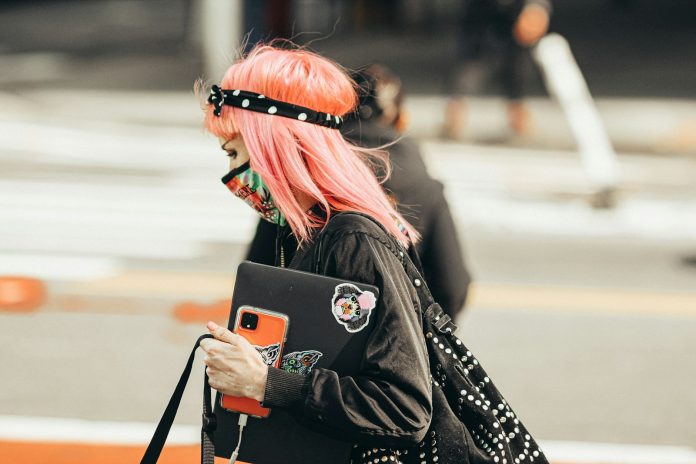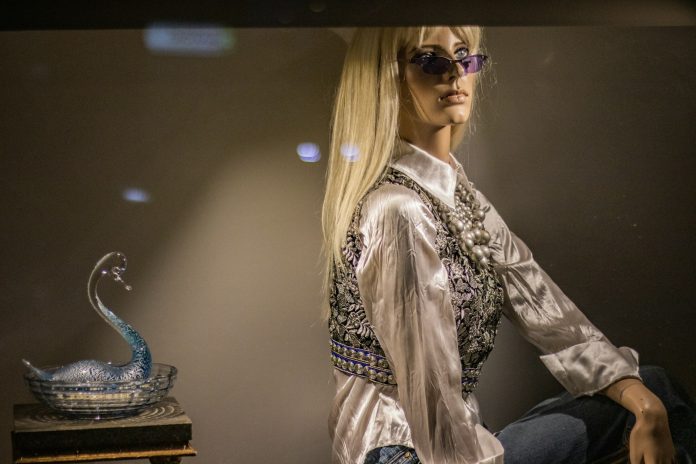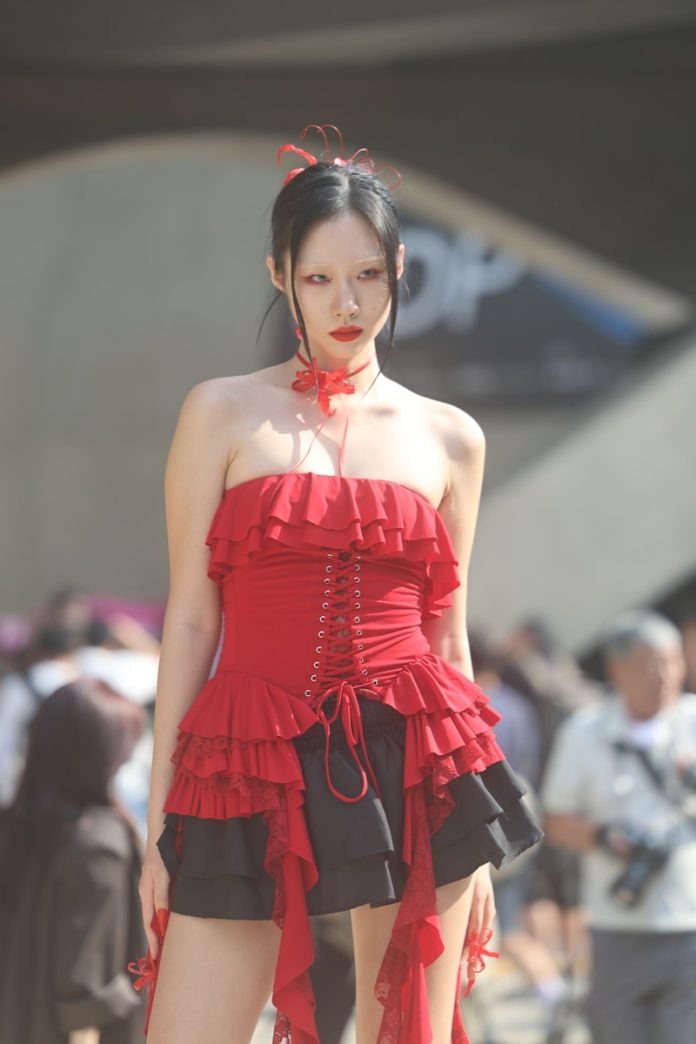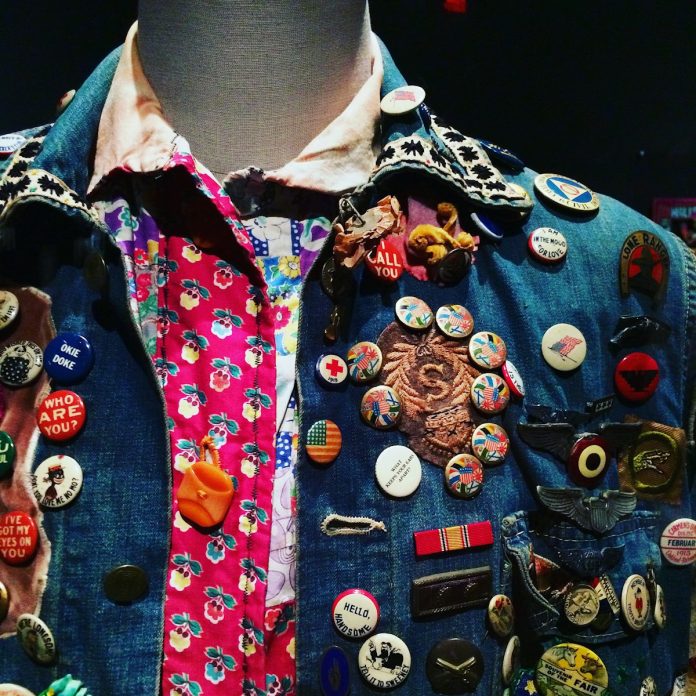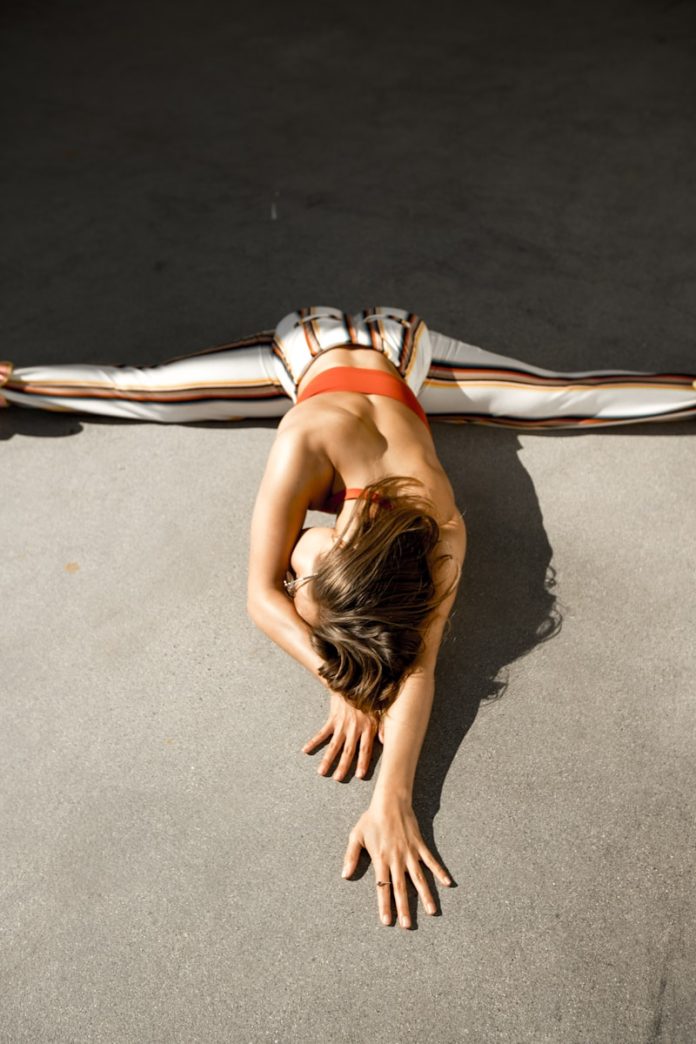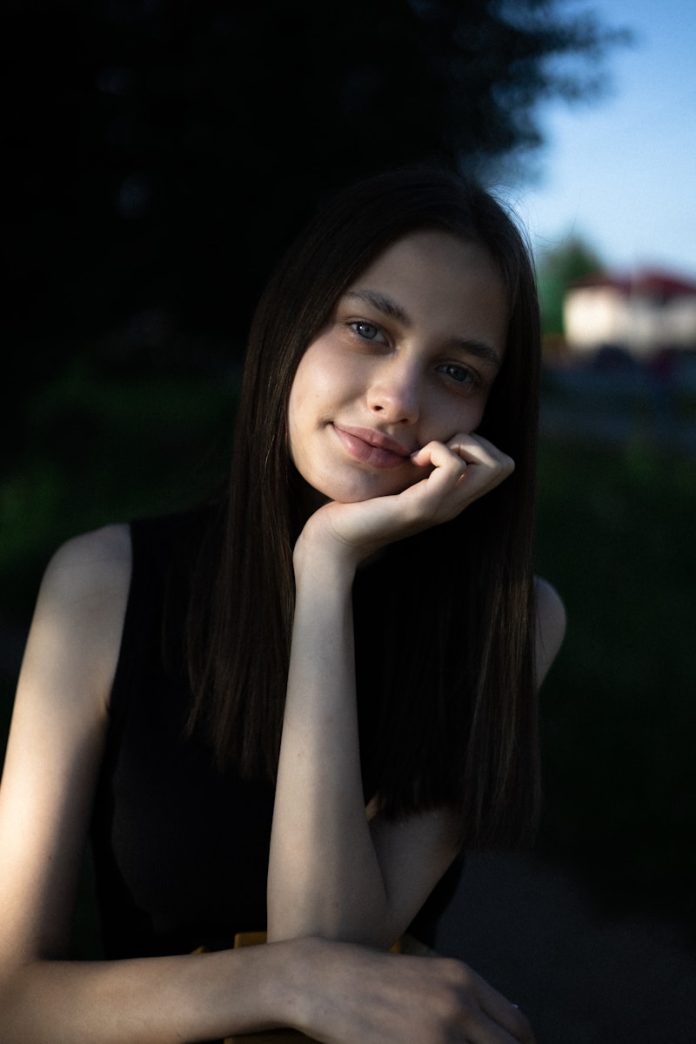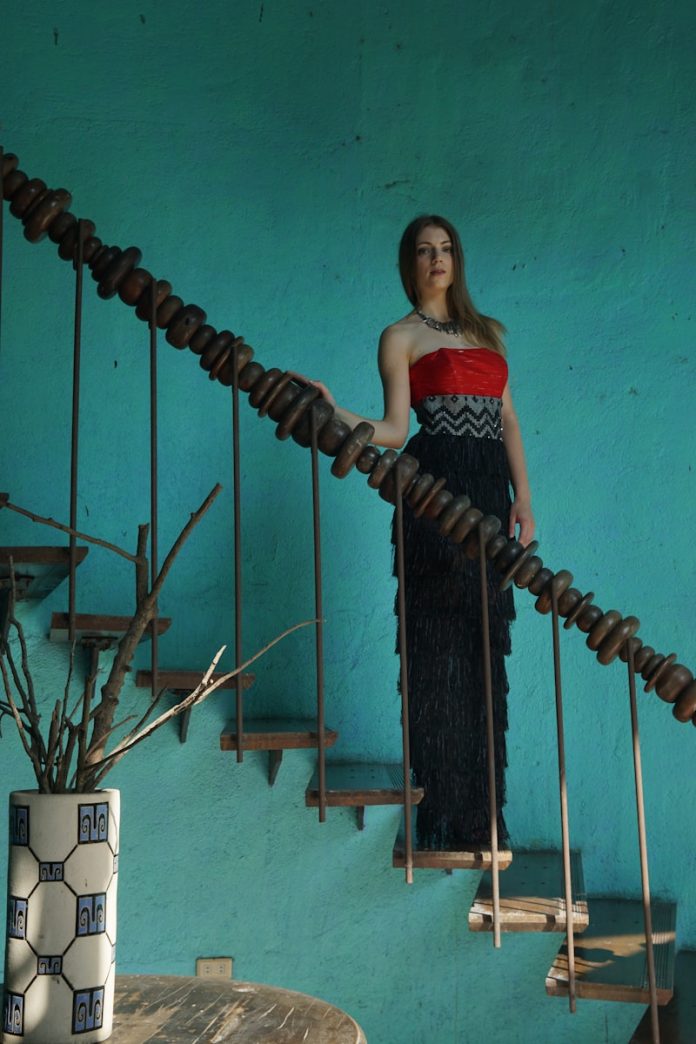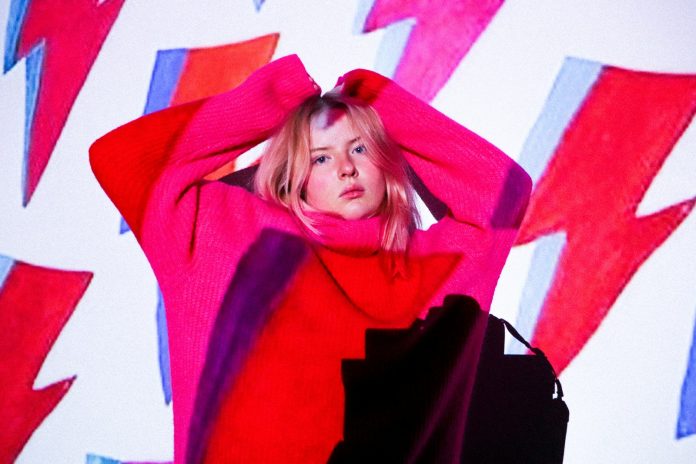In the concrete cathedrals of the modern city, where culture lives and breathes on every block, style is more than self-expression—it’s survival, identity, and sometimes even protest. One of the most vibrant forms of this cultural currency is streetwear, a movement born from the pavement and pulsing with rhythm. At its core, streetwear is less about fashion trends and more about energy. And that energy? It often comes from music.
From boom boxes in the Bronx to sound systems in Kingston, from Tokyo’s underground clubs to London’s grime basements, music has long been the unseen thread weaving streetwear into a living, breathing art form. What people wear in the streets isn’t just about what’s cool—it’s about what they hear. The thump of bass, the snap of a snare, the swing of a lyric—all of it inspires, informs, and reshapes the clothes people wear. This essay explores the seamless dance between sound and fabric—how rhythm becomes thread, and how music doesn’t just inspire fashion, it is fashion.
Beat by Beat: The Origins of Music-Fueled Street Style
The roots of streetwear are as diverse as the genres of music that shaped it. In the late ’70s and early ’80s, as hip-hop exploded from New York’s boroughs, it carried with it a visual aesthetic that was as raw and unapologetic as its lyrics. Tracksuits, oversized jackets, Kangol hats, and gold chains became iconic—not because fashion houses declared them stylish, but because rappers and breakdancers made them symbols of status, rebellion, and self-worth.
At the same time, punk was exploding in London. Music lovers in torn tees, leather jackets, and safety pins challenged the primness of traditional British attire. Their look was anti-authority, anti-corporate, and defiantly DIY. The clothing reflected the sound—fast, gritty, and unpolished.
Reggae and dancehall, meanwhile, brought their own flavor: bold patterns, military-inspired tailoring, and vibrant Rastafarian color palettes. In Tokyo, hip-hop mixed with Harajuku’s eclectic style, giving birth to one of the most experimental fashion playgrounds in the world.
The common thread across all these movements? Music didn’t just influence what people wore—it gave them a reason to wear it. The beat drove the look.
Visualizing Sound: How Music Translates to Fabric
What does music look like? For many designers and wearers of streetwear, it’s texture, layering, movement, and rhythm. A jazz beat might be reflected in asymmetrical cuts, while a trap anthem might inspire a dark, gritty, utilitarian silhouette. Rave culture translates sound into fluorescent colors and reflective materials that shimmer under blacklight—clothes made to move, to sweat, to dance until dawn.
Lyrics become logos. Album covers become graphic prints. Song titles become taglines on oversized tees and hoodies. Artists become muses—and collaborators. Think of Kanye West’s YEEZY line, heavily influenced by the minimalism of his 808s & Heartbreak era. Or Billie Eilish’s signature oversized silhouettes—moody, genderless, and deeply reflective of her haunting, genre-bending music.
The translation is both literal and subconscious. Sometimes it’s in the color palette of an album. Sometimes it’s in the emotional resonance of a song that makes someone pull on a pair of combat boots instead of sneakers. When sound becomes style, it opens a space where fashion is felt rather than just worn.
Subcultures, Soundtracks, and Signature Looks
Streetwear and music have often moved hand-in-hand because both serve as markers of subculture. They create in-groups and out-groups. The person wearing a vintage Metallica tee, plaid pants, and Docs is telling a story. So is the kid in the retro Nike windbreaker, gold chain, and Jordans. So is the dancer in cargo pants and a crop top at an underground techno party.
Each genre of music has cultivated its own look. Some are sharp-edged, others soft. Some are loud, some muted. But they all say, “This is where I belong.”
Hip-Hop: Bold logos, sneakers, caps, and sportswear. From Run DMC’s Adidas to Travis Scott’s Nike collabs, hip-hop has shaped sneaker culture and turned the hoodie into a high-fashion item.
Rock/Punk: Distressed denim, band tees, studded jackets. The DIY spirit of punk is mirrored in handmade patches and thrifted finds.
Electronic/EDM: Neon colors, reflective materials, techwear. These looks are made for dancing, glowing, and standing out under strobes.
Grunge: Flannel, beanies, layered knits. A nod to the Seattle music scene and a visual rebellion against ’90s corporate glam.
Afrobeats/Reggaeton: Bright colors, mixed prints, fitted streetwear. Style that moves with rhythm and celebrates cultural pride.
These looks are more than costumes. They’re cultural uniforms—uniforms without conformity—allowing wearers to feel seen, to belong, and to make noise without saying a word.
The Artist Effect: Music Icons as Streetwear Architects
Today’s music artists aren’t just influencing fashion—they’re designing it. Collaborations between artists and fashion houses or streetwear brands are no longer novel; they’re expected. From Tyler, The Creator’s Golf le Fleur to A$AP Rocky’s high-low blend of Dior and vintage thrift, musicians are style leaders, not followers.
Pharrell Williams, now at the helm of Louis Vuitton Menswear, embodies the fusion of rhythm and threads better than most. His early work with Billionaire Boys Club and ICECREAM brought Japanese streetwear aesthetics to the West, infused with hip-hop culture and skateboarding flair.
Rihanna’s Fenty line redefined luxury streetwear, bringing inclusivity and femininity to the forefront. Even legacy bands like The Rolling Stones or Nirvana have indirectly designed modern wardrobes through the resale value of their vintage band tees—an entire economy of nostalgia built around sound.
The impact of these artists is massive because their clothes feel like extensions of their music. Fans want to wear the vibe. And in doing so, they become part of the story.
DIY & Customization: Fashion Freestyling
In many ways, wearing music-inspired streetwear is like freestyling your outfit. There’s no single formula, only rhythm and mood. This is why DIY remains such a key component of the culture. Hand-painted jackets, reworked vintage band tees, and stitched-on patches allow wearers to remix their wardrobe the same way a producer might flip a sample.
This spirit of customization honors the roots of both music and fashion as forms of resistance. For marginalized communities, self-made fashion was the only kind available. Turning a pair of old jeans into a statement piece wasn’t just resourceful—it was revolutionary.
Today’s resurgent interest in sustainable fashion has breathed new life into this ethos. Platforms like Depop and Instagram have given young creators space to build brands from upcycled clothes inspired by the sounds that raised them. Whether it’s a tie-dyed hoodie named after a Drake lyric or a bucket hat made from old concert merch, the message is clear: you don’t just consume culture—you create it.
The Future Is Audio-Visual
As streetwear continues to evolve, so does the interplay between fashion and sound. Virtual concerts, digital fashion, and metaverse avatars are already blurring the lines between audio and aesthetic. Artists are launching fashion drops alongside album releases, creating multi-sensory brand experiences that go beyond merch.
Imagine this: a song is released, and with it comes an NFT outfit for your digital avatar, a real-world capsule collection, and an AR filter that lets you try the clothes on virtually. This is not fantasy—it’s happening. The future of music-inspired fashion is interactive, immersive, and entirely multisensory.
In that future, sound won’t just inspire fashion. It will be fashion. Responsive fabrics that change color based on BPM, AI-generated prints synced to playlists, and streetwear lines co-designed by algorithms and artists could all be part of tomorrow’s wardrobe.

